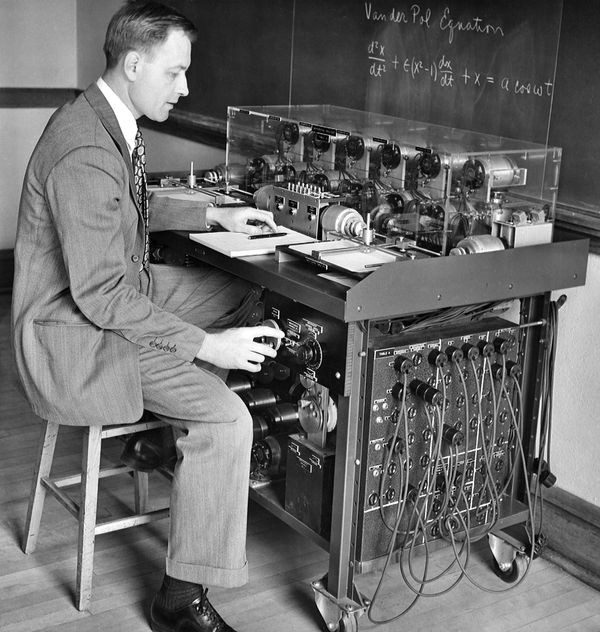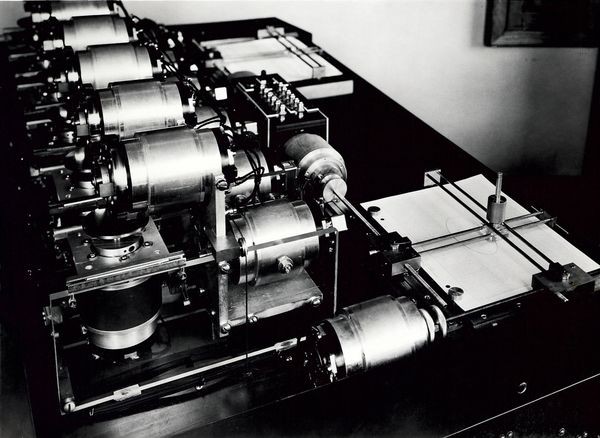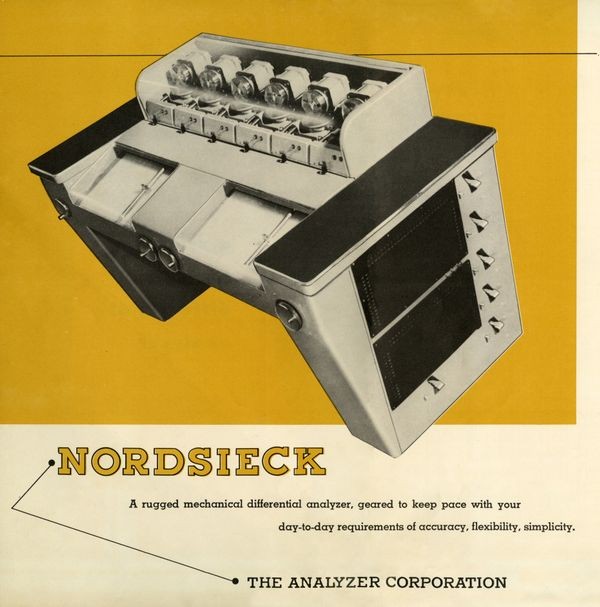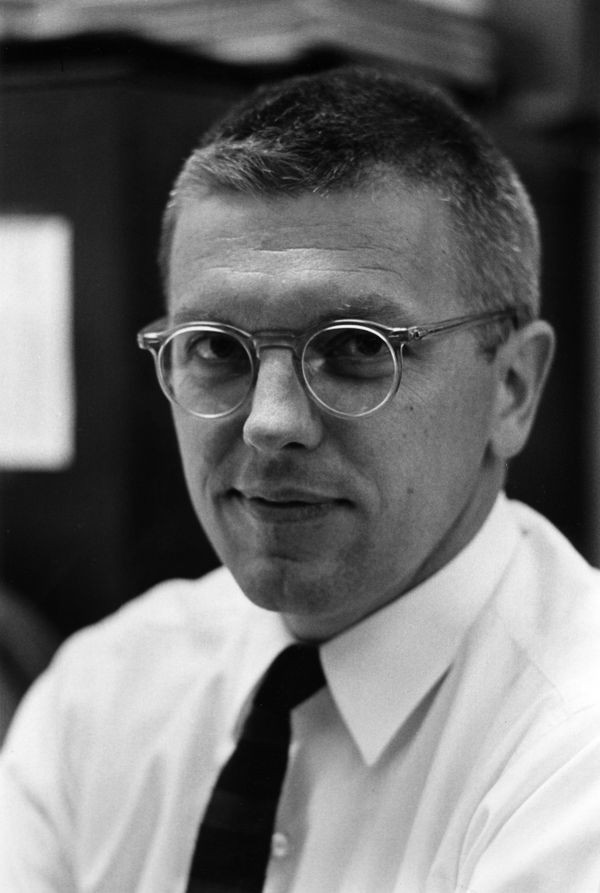Nordsieck’s Differential Analyzer
Nordsieck Differential Analyzer
Arnold Nordsieck started building his differential analyzer when most other computing researchers were experimenting with vacuum-tube digital electronic computers. Nordsieck needed a simple, cheap, and practical machine. A small differential analyzer fit the bill.
Nordsieck's Differential Analyzer
Using $700 worth of surplus World War II supplies, Arnold Nordsieck assembled an analog computer in 1950. It was modeled on differential analyzers built since the 1930s—but with key differences.
For instance, Nordsieck’s computer used electrical connections instead of mechanical shafts. And he set himself the priorities of “convenience and simplicity…portability, and economy.” His device’s small size and straightforward engineering satisfied the first three requirements. Its $700 price tag satisfied the fourth.
Arnold Nordsieck with the Nordsieck Differential Analyzer
A newspaper article in the News-Gazette called this machine a “baby brain.” Although digital “electronic brains” were starting to capture the imagination of the public, this analog computer, which “...takes less electrical current than a toaster,” was different.
View Artifact DetailNordsieck Differential Analyzer Close-Up
Nordsieck’s differential analyzer used synchros (selsyns) to convert angular motion of the disk-and-wheel integrators (visible on the left) to electric current. Also visible are the two plotting tables that can be used for input or output.
View Artifact DetailWhat Did Nordsieck's Device Do?
How do you aim artillery, balancing variables of speed, trajectory, friction, and other forces? How do you model a complex natural system like climate, factoring in constantly changing measurements from temperature and humidity to wind speed and direction?
Differential equations are the primary means of using mathematical formulas to describe changing phenomena. Arnold Nordsieck’s electromechanical differential analyzer, like mechanical analyzers that preceded it, solved such differential equations. It provided a powerful tool for engineering, rocketry, physics, economics, and other disciplines that needed to model complex real world conditions.
The Nordsieck Computer brochure
The Analyzer Corporation in Los Angeles tried to productize Arnold Nordsieck’s analyzer. The machine in the brochure was a prototype used by University of California’s Radiation Laboratory—the very machine Nordsieck had built in Illinois, transported across the country.
View Artifact DetailTechnology On a Shoestring
What do you need to build a differential analyzer? Richard Norberg might have answered, “What have you got?”
Norberg, who as a grad student had worked with Arnold Nordsieck on his original analyzer at the University of Illinois, completed a second model at Washington University in St. Louis in 1956…using spare parts.
Richard Norberg (1922–2010)
After leaving the University of Illinois in 1954, Richard Norberg was a professor in Washington University’s physics department until his death at 88.
View Artifact DetailLetter from Richard Norberg to Arnold Nordsieck
Although the analyzer cost only $700, Norberg worried about accounting for the price of the parts, especially since he was moving to Washington University.
View Artifact Detail





















